Focus Topics
-
2025
Symbolic Forms. The »Myth« and its Political Forms
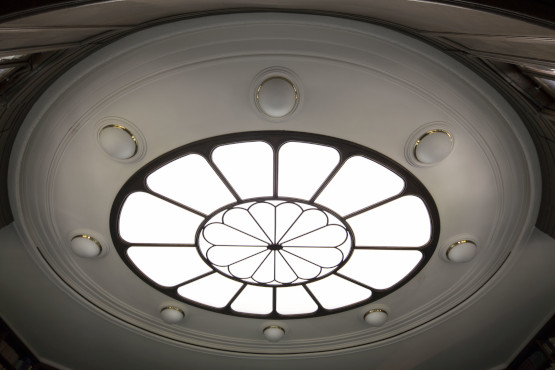
Warburg-Haus, Elliptische Deckenrosette im Lesesaal
Foto: Arvid Mentz, UHH RRZ MCC
Concept: Birgit Recki, Benjamin Fellmann
In 2024, the 150th birthday of the great thinker Ernst Cassirer was celebrated. 2025 is also a significant year in the Cassirer cosmos: the second part of the Philosophy of Symbolic Forms was published in 1925. In the volume entitled Mythical Thought, Cassirer develops his theory of myth as one of the »symbolic forms« that make up the system of culture: When Cassirer speaks of »myth«, he means only among others, the characteristic narrative of the world-forming origin story ; he also uses the term pars pro toto to refer to »mythical thinking«, »mythical consciousness« and »mythical way of life«.
The thematic focus will provide space and opportunity to explore the cultural-historical development and current relevance of mythical thinking in social and political dimensions, in which we are currently experiencing how it unfolds its powerful effect. Mythical consciousness is determined by the dominance of emotion. And it is obsessed with the power of images. Its explosiveness lies in its lack of abstraction and reflective distance. As an elementary form of creating meaning through symbolization, it is always tied to the expressive phenomenon, and its hallmark is the in-difference of sign (word or image) and thing.
Following Cassirer, mythical thinking is by no means an archaic stage of development. With him, we can understand it as the native soil of culture. The span and permanence of effect are suggested in this metaphor and the perspective of cultural development into the future is included. It is thus understandable that, despite his extensive study of early and indigenous cultures, Cassirer places just as much emphasis on the continued assertion of mythical consciousness in the world shaped by modern science – including and especially in its political forms. This also explains why in 1946 he can title his late study of the elements of totalitarian thinking: The Myth of the State.
The program of academic lectures and events takes place in close cooperation with various partners and institutions. In fall 2025, an international course of study for young academics on »A Postcolonial Condition? Art, Literature, Film, and the Everyday in Eastern Europe« is jointly organized by the University of Hamburg and the Aby-Warburg-Stiftung.
-
2024
Dynamics of Form II

Warburg-Haus, elliptical ceiling rosette
Foto: Arvid Mentz, UHH RRZ MCC
Concept: Cornelia Zumbusch, Benjamin Fellmann
In 2024, the Warburg-Haus continues its two-year focus topic »Dynamics of Form«, which began in 2023. It invites a wide range of inquiries and perspectives to question both theoretical traditions of form reflection and to discuss concrete artistic and cultural (non-)forms. What cultural power do forms unfold in images and ideas?
Cultural and artistic forms as well as forms shaping societies forms are not firm and fixed, but always in motion. They emerge under particular conditions and they stabilize, establish and change across different times and cultural spaces. The question of the dynamics of forms allows us to pay closer attention to the forces at work in their migration and transmission. What is the relationship between their intrinsic potentials and the external influence of actors in changing historical, social, or political contexts? And how do art and culture reflect changes in their forms? Problems of form in the very literal sense are to be investigated, that is, geneses and adaptations, which possibly allow for insights into their dynamic preconditions precisely where the forms remain incomplete, or dissolve. What special role, then, do ephemeral, elusive, or distorted forms play?
Research into the emergence and reproduction of forms as well as their flexibility and elasticity has a long tradition at the Warburg-Haus in Hamburg. With his philosophy of symbolic forms, Ernst Cassirer laid the foundation for a philosophy of human culture; Aby Warburg investigated the medial conditions of the distortion and transformation of pictorial formulas in the process of migratory movements. These traditions have been and are being continued in the projects ›Bilderfahrzeuge‹ (BMBF) on the materiality of pictorial traditions, in the project of digitizing the ›Image Index of Political Iconography‹ (DFG) as well as in the Centre for Advanced Studies ›Imaginaria of Force‹ (DFG), in which dynamic conceptions of the arts are discussed.
The program of scientific lectures and conferences takes place in close cooperation with the DFG-Centre for Advanced Studies ›Imaginaria of Force‹ (Universität Hamburg) and the NOMIS research group ›Traveling Forms‹ (University of Konstanz). In autumn 2024, an international Warburg Seminar on ›Energy Landscapes‹ is organized by the DFG-Centre for Advanced Studies ›Imaginaria of Force‹ and the Warburg-Haus.
-
2023
Dynamics of Form

Warburg-Haus, elliptical ceiling rosette
Foto: Arvid Mentz, UHH RRZ MCC
Concept: Cornelia Zumbusch, Benjamin Fellmann
Cultural and artistic forms as well as forms shaping societies forms are not firm and fixed, but always in motion. They emerge under particular conditions and they stabilize, establish and change across different times and cultural spaces. The question of the dynamics of forms allows us to pay closer attention to the forces at work in their migration and transmission. What is the relationship between their intrinsic potentials and the external influence of actors in changing historical, social, or political contexts? And how do art and culture reflect changes in their forms? Problems of form in the very literal sense are to be investigated, that is, geneses and adaptations, which possibly allow for insights into their dynamic preconditions precisely where the forms remain incomplete, or dissolve. What special role, then, do ephemeral, elusive, or distorted forms play? What cultural power do forms unfold in images and ideas? With these questions, the thematic focus invites to question theoretical traditions of form reflection and to discuss concrete artistic and cultural (non-)forms.
Research into the emergence and reproduction of forms as well as their flexibility and elasticity has a long tradition at the Warburg-Haus in Hamburg. With his philosophy of symbolic forms, Ernst Cassirer laid the foundation for a philosophy of human culture; Aby Warburg investigated the medial conditions of the distortion and transformation of pictorial formulas in the process of migratory movements. These traditions have been and are being continued in the projects ›Bilderfahrzeuge‹ (BMBF) on the materiality of pictorial traditions, in the project of digitizing the ›Image Index of Political Iconography‹ (DFG) as well as in the Centre for Advanced Studies ›Imaginaria of Force‹ (DFG), in which dynamic conceptions of the arts are discussed.
The program of scientific lectures and conferences takes place in close cooperation with the NOMIS research group ›Traveling Forms‹ (University of Konstanz) and the DFG-Centre for Advanced Studies ›Imaginaria of Force‹.
-
2022
Images as Agents of the Political II
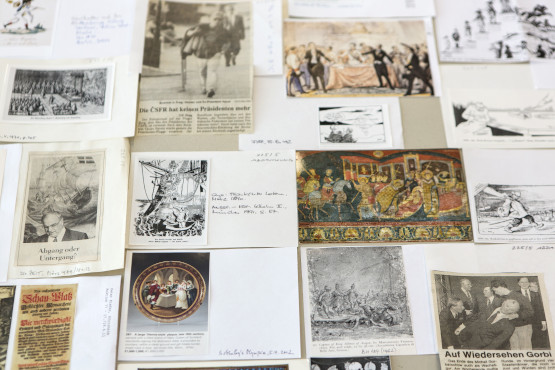
Image cards from the Image Index of Political Iconography
Warburg-Haus Hamburg
Concept: Uwe Fleckner, Benjamin Fellmann, Laura Gronius
In 2022, the two-year focus topic provides the occasion to address and question images as actors of political culture and communication in a variety of interdisciplinary investigations. With this annual theme, the Warburg-Haus provides a space to examine phenomena of political images and to discuss questions of the social significance of political images in a global context that are of ever greater importance – also in view of the current dramatic war events and political developments in Europe and their repercussions worldwide. The focus topic is linked to the large-scale digitization and research project on the »Image Index of Political Iconography« at the Warburg-Haus funded by the DFG, that will run in its first project phase until the end of 2022.
In particular, the Warburg-Haus will be holding a series of lectures and events in joint cooperation with the Hamburg Institute for Social Research (HIS) in the first and second half of the year. The focus of the cooperation is on building an interdisciplinary bridge between the perspectives and competencies of image studies at the Warburg-Haus and the social sciences at the Hamburg Institute for Social Research, which also holds outstanding collections of photographs, posters, and images in its archives and collections on the social history and history of political movements. In cooperation with the Warburg-Haus, these will be examined more closely from the perspective of political iconography. The events are conceived in cooperation with Wolfgang Knöbl, Director of the HIS, Svenja Kunze, Head of the Archives of HIS, Philipp Müller, Research Group Democracy and Statehood of the HIS, Uwe Fleckner, acting Director of the Warburg-Haus 2021-22, Benjamin Fellmann, Scientific Coordinator of the Warburg-Haus, and Laura Gronius, Coordinator of the DFG-funded project of the digitization of the »Image Index of Political Iconography« at the Warburg-Haus.
-
2021
Images as Agents of the Political

Image cards from the Image Index of Political Iconography
Warburg-Haus Hamburg
Concept: Uwe Fleckner, Benjamin Fellmann
Nowadays, images surround us everywhere and at all times. In works of art, media and networks, in advertising and on platforms, they convey factual information as well as polemic-critical statements, and have a direct or indirect effect on their addressees. In the age of the mobile Internet, augmented reality, and the algorithmic control, generation, and evaluation of images, their significance for active and future coexistence in societies is constantly increasing across the globe. Political iconography is a visual phenomenon that has evolved historically, but it is also the scientific method of its study: in art and visual studies, it provides an understanding of complex visual contexts of life in the modern as well as post-modern world and of the potential for political impact that images have in a spectrum ranging from information to propaganda. It was Aby Warburg who laid the foundation for its scholarly study at his Hamburg library of cultural studies when he not only included it in his epoch- and genre-spanning research on images, but also created an archive on the political propaganda of mass media warfare already during the First World War, which attempted to preserve and analyze the mobilizing forces of agitation on the basis of historical research. This led to an awareness of images as agents of the political that develops, to this day, an enduring international impact.
With its focus topic »Images as Agents of the Political«, the Warburg-Haus aims to provide the space for taking a closer look at political visual phenomena and for discussing questions of the current significance of political images in a global context: From current iconoclasms and propagandistic warfare, visual strategies of targeted information and disinformation, the role of images in crises and pandemics, but also in successful coexistence and social progress, to strategies of conscious and unconscious visual argumentation in political practice and artistic production.
-
2020
Arts in the Technical Age, II
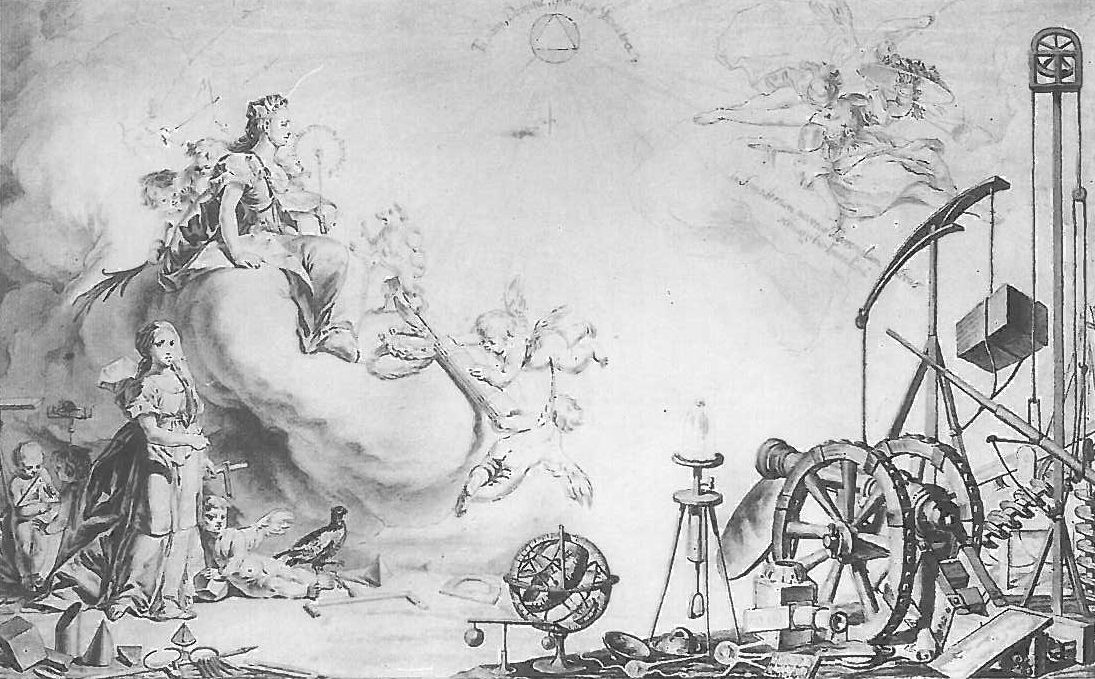
Johann Quirin Jahn, Allegory of the technical disciplines, 1767
From the Image Index of Political Iconography at the Warburg-Haus
Concept: Birgit Recki, Benjamin Fellmann
With the establishment of the Kulturwissenschaftliche Bibliothek Warburg and the development of a set of instruments that takes art and images seriously as bearers of social, cultural and political significance across times and spaces, the scholars around Aby Warburg in Hamburg established art history as a modern science of cultural studies. For Warburg, as a technophile, the view of cultural forms of expression was always also one of the relationship between art, media and technical knowledge, up to the present. This interdisciplinary interest provides the occasion for the two-year focus topic at the Warburg-Haus to investigate the topicality of Warburg’s methodological heritage and, focusing on the relationship between art and technology, to take up innovative impulses and methodological reflections that continue to inspire to this day.
In the first half of 2020, the Warburg-Haus lectures will focus on Hans Blumenberg’s work on technology and art, on the occasion of the great philosopher’s centenary this year; on the architectural design of subway stations in Europe in the second half of the 20th century as a central feature of the infrastructural appearance of modern metropolises; in the lecture of this-year’s holder of the Warburg professorship, on pictorial worlds of visual experiences in Hamburg and German painting as well as Italian art of the late Trecento and early Quattrocento; and on the technical history of the opera (Birgit Recki, Frank Schmitz, Christopher Wood, Alexander Meier-Dörzenbach). The lectures are framed by a program of cooperation events. In April, in cooperation with the Kunsthaus Hamburg, the exhibition Ah humanity! of filmmakers Véréna Paravel and Lucien Castaing-Taylor from Harvard University’s Sensory Ethnography Lab shall provide the occasion for a curator’s guided tour of the exhibition followed by a panel discussion. In May, thanks to a cooperation with Flexibles Flimmern – The mobile cinema, a film screening of Paravel/Castaing-Taylor’s major work Leviathan (2012) is planned in the reading room, and in June, in cooperation with the Hamburgische Wissenschaftliche Stiftung and publishing house Klett-Cotta, an evening with Ernst Kantorowicz is to take place on the occasion of the publication of the German edition of Robert E. Lerner’s biography of the internationally influential historian and medievalist, with translator Thomas Gruber, Villa I Tatti Florence, Barbara Picht, ZfL Berlin, and Christopher Wood, New York University.
Note on the Corona-related closure of the Warburg-Haus since March 2020:
No events can take place during the period of the Corona-induced closure of the house to the public. We regret this very much. Nevertheless, together with lecturers and cooperation partners, we are looking for possibilities to realize digital alternatives or reschedule events. We cordially invite you to regularly check our website under Announcements and the calendar. In particular, in reaction to Corona we offer all friends of the Warburg-Haus on our website the opportunity to follow an online lecture on the Philosophy of Culture given by Birgit Recki (in German), recorded weekly from April through July in the reading room of the Warburg-Haus and made available online as a podcast. Those events in the reading room that could not take place due to the Corona epidemic are not cancelled, but postponed in agreement with our cooperation partners to later dates when it will be possible to hold them in suitable forms.
In the second half of 2020, the lecture to commemorate the 91st anniversary of Aby Warburg’s death will focus on digital processes of contemporary visual culture and Warburg’s approach to critical image research for the digital age; in November, the fifth lecture in the series will examine techniques of image and knowledge production in European natural history around 1800, and the lecture by the 2020 laureate of the Aby Warburg Foundation’s scholar’s prize, the Wissenschaftspreis, and sixth recipient of the Martin Warnke Medal, will focus on Diego Velázquez’ famous painting Las Hilanderas (Ursula Frohne, Dominik Hünniger, Victor I. Stoichita).
-
2019
Arts in the Technical Age, I
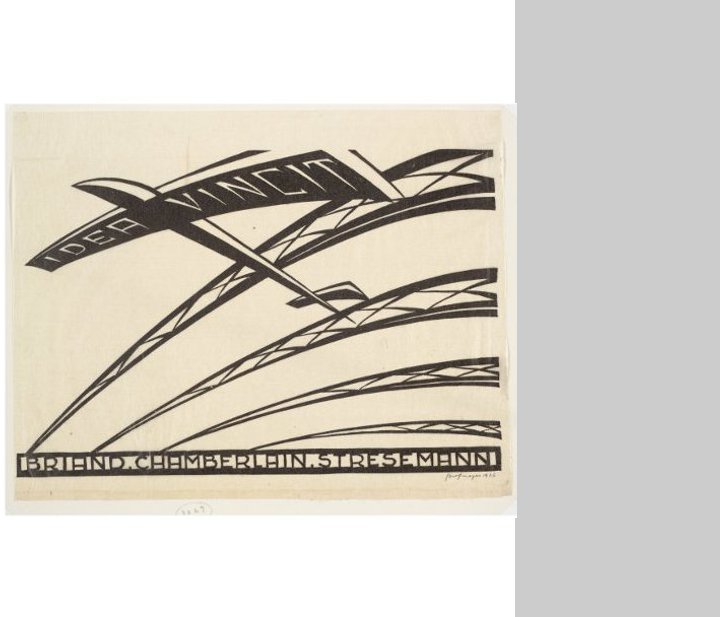
Air mail stamp design Idea Vincit, 1926, linocut by Otto Heinrich Strohmeyer after a design by Aby Warburg and Otto Heinrich Strohmeyer
Harvard Art Museums/Fogg Museum, Gift of Paul J. Sachs © President and Fellows of Harvard College
Concept: Birgit Recki and Benjamin Fellmann
2019 not only sees the centenary of the Universität Hamburg, but also the 90th anniversary of Aby Warburg’s death. This year, the Warburg-Haus focuses on Aby Warburg and the birth of modern art history in Hamburg within a programme on the occasion of the university’s jubilee: »Arts in the Technical Age«. Since the 1920s, the Kulturwissenschaftliche Bibliothek Warburg (K.B.W., Warburg Library of Cultural Studies) played a major role in establishing art history and in interconnecting the humanities at Universität Hamburg. With the inauguration of the library’s building in Heilwigstrasse no. 116 in 1926 – today’s Warburg-Haus, that has been open to the public again since 1995 – her founder Aby Warburg had also provided an institutional place dedicated to interdisciplinary exchange. Inspired by the innovative impulses of Warburg’s art historical works and their methodological reflections, the »Hamburger Schule« (Hamburg School of Art History) around Erwin Panofsky, Fritz Saxl, Gertrud Bing, William S. Heckscher, Edgar Wind et al. found worldwide recognition through decades of continuous productive research, before and after the library’s exile to London in 1933. The annual topic »Arts in the Technical Age« traces the topicality of Aby Warburg’s approach to the 21st century. The university’s jubilee is a welcome occasion to evoke the role played by Aby Warburg, his family and the circle of scholars around him in the creation of the university in Hamburg – among them especially Erwin Panofsky, first full professor of Art History, and philosopher Ernst Cassirer, one of the first professors appointed in 1919 and rector of the university in 1929/1930. Attention is also given to the current projects and activities at the Warburg-Haus, its archives, research centres and its scientific and cultural setting.
After the opening event with an exhibition and performance by Israeli artist Hila Laviv in October 2018, the lecture series in the first half of 2019 focuses on Warburg’s relationship to technologies, especially film and airships, the animation of technique in film, options of the perception of artefacts in the Middle Ages with regard to the uncovering of the Hagia Sophia mosaics after 1931 and their impact on the use of film and on avant-garde photography, and music and sound in the digital age (Thomas Hensel, Gertrud Koch, Barbara Schellewald, Rolf Goebel). During the summer term, a seminar introduces students to the history of the Hamburg School of Art History. The lecture series is complemented by thematic guided walks in the city on the tracks of Ernst Cassirer, Aby Warburg and Fritz Schumacher, Hamburg’s Chief Planning Director and teacher of the architect of the Warburg-Haus, Gerhard Langmaack (Birgit Recki, Karen Michels, Hermann Hipp). Visits organized in cooperation with the Denkmalverein Hamburg (historic preservation society of Hamburg), guided tours for students and interested visitors, film projections and other events as well as an open day in June 2019 with an evening lecture on Aby Warburg’s relationship to scientific research in Hamburg (Michael Diers) open the Warburg-Haus to the city and invite to discover its history, archives and research centres.
In the second half of 2019, the lecture series addresses architecture as technique on the example of the cupola of St. Peter’s Basilica, techniques of chronological propulsion in cinema and the Hamburg planetarium as a branch of Aby Warburg’s K.B.W. (Pascal Dubourg Glatigny, Christiane Voss, Uwe Fleckner). In autumn, an interdisciplinary evening with poetry and art will take place in the reading room on roaming about in metaphysical and actual darkness, supported by the consortium Humanities in the European Research Area (Lenia Safiropoulou, Andrej Hovrin, Nathalie Karagiannis, Christina Nakou, Yannis Hadjinicolaou). On the occasion of the jubilee exhibition on this year’s 150th birthday of the Hamburger Kunsthalle (Hamburg art museum) a seminar in the exhibition will take place in cooperation with the Provenance research department of Hamburger Kunsthalle and the Liebelt Chair for Provenance Research at Universität Hamburg (Ute Haug, Gesa Jeuthe), and in October a lecture will be given to commemorate the 90th anniversary of Aby Warburg’s death (Bill Sherman, The Warburg Institute, London). -
2018
Political Emotions

Dome of the Reichstag Building by Norman Foster, Berlin (Detail)
© Deutscher Bundestag / Arndt Oehmichen
Concept: Cornelia Zumbusch and Benjamin Fellmann
The discussion of fear, sorrow, outrage or contempt, but as well of faith, hope, compassion, empathy or sympathy, as political forces is presently increased. A consensus seems to exist on the central role of emotions in political processes: They are presumed to be a driving force both of protest movements as well as in democratic processes of opinion-forming, they seem to guarantee for the cohesion of political entities, they are accountable for psychological group phenomena such as subversion and revolution or for a turning of such movements into terror and fright. Yet, assessments of this phenomenon differ greatly. Whereas some deplore a lack of ›political passion‹, others warn of hysteria, of ›angry citizens‹ and of politics driven by emotions. Are ›politics of sentiments‹ legitimate, then, or is there instead a call for general skepticism towards strategies of emotional overwhelming? Should political decisions be taken rationally and is that possible, at all, or are politics simply unthinkable without emotions?
The Focus Topic »Political Emotions« aims to provide a space for the discussion of these questions at the Warburg-Haus. The lecture series in the first half of 2018 focused on political cultures of emotions in democracy, on compassion, as well as on its darker sides, and on social states of affects in war (Hans-Peter Krüger, Sigrid Weigel, Fritz Breithaupt and Alexander Honold). The lecture series is accompanied by cooperation events on the representation and role of emotions in film, media, literature and the arts. The program of the first half of the year concluded with a special theme day on the cultural perception of (natural) catastrophs, jointly organized by the Warburg-Haus and the Research Centre Images of Nature at Universität Hamburg at the Hamburger Kunsthalle (Hamburg Art Museum). The Warburg International Seminar in October 2018 is dedicated to ›Political Emotions in the Arts‹: Which iconographies do current politics of emotions draw on, what are well established, codified dramaturgies that social movements move along, what well-known narratives are taken up in order to mobilize or contain political emotions? The lecture series in the second half of 2018 addresses representations of political affects in traditional and digital media: Genre cinema as space of experience for community sense, processes of emotionalization in journalism and politico-iconological strategies in the age of internet memes (Hermann Kappelhoff, Irene Neverla and Andrea Pinotti).
-
2017
Latency in the Arts
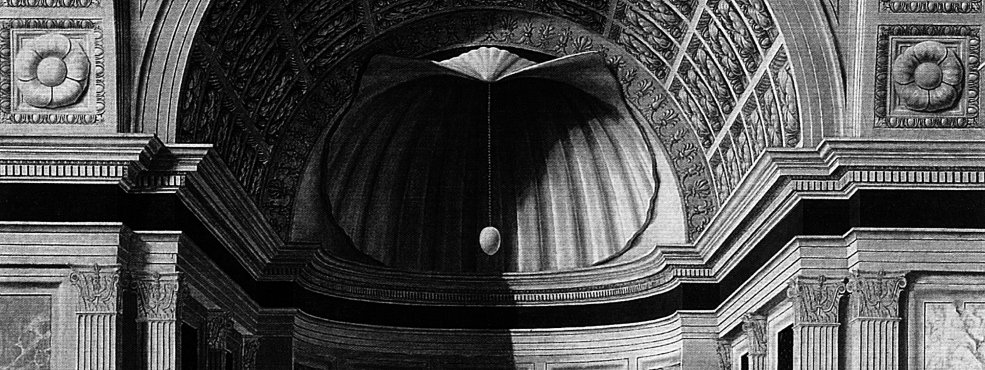
Piero della Francesca, Pala Montefeltro, 1472-74 (Detail)
Concept: Cornelia Zumbusch
Our modern lifeworlds or lived realities change at breakneck speed – and yet things that seem outmoded, the things we believe to have discarded, do not just disappear from the world. So what happens to the things that were there before? How does something fall into oblivion, then continue to exert influence subliminally, and what laws determine how it subsequently re-appears? This process, described variously by Warburg as ‘Mnemosyne’, ‘cultural memory’, and ‘afterlife’, has particular relevance to our contemporary world – since it describes the power of forgotten texts and images to exert an unseen influence and then, without warning, to become a manifest presence once more. This process is the inspiration for this focus topic, Latency in the Arts, which hopes to spark a discussion on the phenomena surrounding latency: patterns of hiding and delaying, becoming invisible, and the hidden influences brought to bear upon cultural and artistic processes.
The aim is to explore the (mental) totems of latency around which these modern experiences crystallize: remains and reminiscences, anachronisms and relics, ghosts and revenants, layers of depth and sedimentation, hesitation and delay. Given their shifting figurations, the discussion will focus in particular upon the limited opportunities to observe these latent elements and pose the question: what happens to things once they have entered the latency phase? How is it possible to recognize ‘latency’ once the latent force has returned to the surface? Which rules determine the way it comes back to light? And what is the logic underlying latency that makes it so singularly relevant to the arts – whether in terms of concealing the sources, devices, and methods used, or its tentative reception by artists and the unexpectedness with which it can lend renewed relevance to the traditional canon?
-
2015 — 2016
Art in Times of Conflict
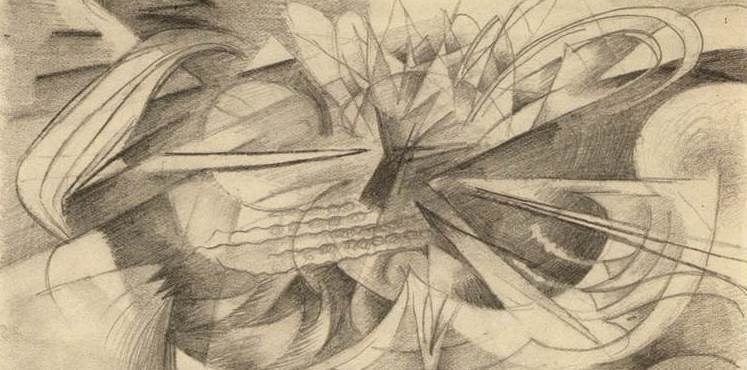
Franz Marc: Streit, 1915 (Blatt 24, Detail)
In 2015 and 2016, the Warburg Haus is focussing on the subject of ‘Art in Times of Conflict’ following in the tradition of Aby Warburg, who firmly established political images in all media as a research topic within the canon of art history and was also aware of the distribution potential of such artworks. Combining different areas of research undertaken at the Warburg Haus, from the work on the Image Index of Political Iconography and the ‘Degenerate Art’ research centre to the project ‘Bilderfahrzeuge: Aby Warburg’s Legacy and the Future of Iconology’, this project aims to open up new perspectives on historical and current political conflicts: today, new iconographies of the political image are created on and through the Internet, for example, with affirmative and subversive images being presented, manipulated, and distributed online. A new faith in images has emerged, but also a new scepticism. A picture, which can make both banal and significant events visible to the entire world the very moment they occur, has become a weapon with immense power in every sense of the word.